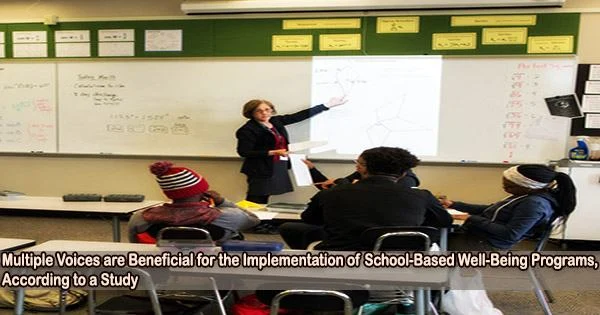Education about health and well-being can be a significant complement to the academic program. However, in order for these programs to be successful, they must be administered in a way that benefits kids, teachers, and school administrators.
In a recent study from the University of Illinois, a mixed-methods approach was used to evaluate the implementation of two preventative initiatives.
“Soliciting diverse perspectives is important. The more we can listen to everyone who’s involved, the better we can learn what can be done to improve the programs. And we really need to include the youth voice, because they’re the experts of their own experience,” says Jacinda K. Dariotis, professor in the Department of Human Development and Family Studies and director of the Family Resiliency Center, both part of the College of Agricultural, Consumer and Environmental Sciences at the U of I. Dariotis is lead author on the paper, published in Prevention Science.
Three metropolitan public schools in disadvantaged areas hosted the study. Participants were ninth-graders who self-identified as Black in the majority (84%) of cases. The students participated for the study and were paired up in either a health education or a mindfulness class at random. The programs were delivered in 30-minute sessions four times a week for 10 weeks.
It’s important to bring in youth input and perceptions early on to ensure the programs can be designed and implemented in ways that meet the needs of the students, as well as the teachers and the schools.
Professor Jacinda K. Dariotis
The researchers requested that teachers record student participation and attendance as well as their personal commitment to the program in order to assess program implementation. Independent observers watched some of the class sessions on videotape and graded them. Finally, students discussed their experiences in focus groups after program conclusion.
Dariotis and her colleagues identified four themes that had a positive impact on delivery. Instructors must, for instance, pay close attention and engage their students. To keep students’ interest, a variety of activities are required, including more student participation. There needs to be sufficient time for program delivery. Student preferences should also be considered in program scheduling.
“One of our key takeaways is that students’ relationship with the instructor really matters, because that builds connection,” Dariotis says. “We also found that active learning is important, including physical activity and opportunities to help and train other students.”
Through instructor self-reports and observer notes, the researchers assessed program fidelity, which refers to how strictly instructors follow a program methodology. Dariotis notes that although instructors occasionally broke rules because of interruptions and external factors, this isn’t always a bad thing. Some flexibility in program delivery can help to accommodate student and school needs.
The study also identified a number of implementation challenges, such as a lack of time, problems with behavior management, and interruptions to the educational environment.
“These are very low-resource schools in disadvantaged neighborhoods. When you’re trying to provide preventive programs like these, there are so many distractions that make implementation difficult. The more we can do to bring greater predictability and reduce distractions, the better chances of success,” Dariotis says.
While schools must balance a variety of demands on their limited time with the viewpoints of young people and their difficulties, involvement can be increased by doing so.
“It’s important to bring in youth input and perceptions early on to ensure the programs can be designed and implemented in ways that meet the needs of the students, as well as the teachers and the schools,” Dariotis states.
“These types of programs can be provided in any school or afterschool program wanting to invest in low cost, highly scalable, and sustainable programs that can make a difference,” she concludes.
















